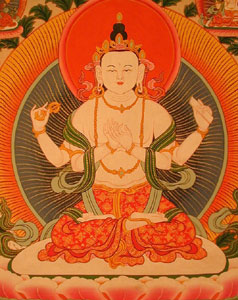A lot has been written and said about Buddhist ethics, but David Chapman, Charles Goodman and a number of other thoughtful people make a strong case that Buddhist ethics is largely a Western invention. Chapman, in a deliberately provocative series of writings, goes quite a bit further and advances the thesis that Buddhist ethics in the West has now largely become a way to solidify a sense of self and signal that one is a good person.
A differentiation I want to offer is between morality and ethics on the one hand and the behavior one chooses to support practice on the other.
Morality can be seen as the tacit understandings and behavioral principles that provide cohesion for a group of people, i.e., a society. The German philosopher Peter Sloterdijk sees morality as part of the immune system of a society, i.e., how a society determines whether you belong or not. Jonathan Haidt points out the intimate relationship between morality and reputation. He also notes that in most cases the stricter the morality of the group, the more cohesive it is and the longer it is likely to maintain its identity and effectiveness as a group.
Many people (myself included) interpreted the disciplines of the monastic code, the bodhisattva vow and vajrayana commitments as moral systems. But they are not moral systems in the Western sense. They are more descriptions of possible behavior than prescriptions, and their primary function is to support the efforts we are making in practice. There is a term that refers to all these disciplines and it is tempting to translate that term as life-style. That seemed to casual, so I eventually opted for chosen behavior.
The point is that we choose to live in ways that support our practice. When we don’t follow those choices, then we are undermining our practice efforts, but we are not acting immorally, with all the weight that that term has in Western culture. These chosen behaviors are not offered as universal prescriptions but as individual efforts. Many Tibetan teachers wrote poems or songs about how they aspired to live and you will find three examples that I’ve translated on Unfettered Mind’s website: Mind Training in Eight Verses, The 37 Practices of a Bodhisattva and 30 Pieces of Sincere Advice. Rather that interpret traditional guidelines for behavior in a way that made them easy to follow, these teachers often pushed the guidelines further so that they bit deeply into the patterns of distraction, conceptualization and self-cherishing. In Mind Training in Eight Verses, Langri Tangpa, for instance, says:
When scorn and insult become my lot,
Expressions of some jealousy,
I alone accept defeat
And award the other victory.
And Longchenpa, in 30 Pieces of Sincere Advice, offers such gems as:
Although you think you’re serving the welfare of beings
By acting as a guarantor, witness or advocate to help settle others’ disputes,
Your own opinions will inevitably assert themselves.
Don’t be concerned – that’s my sincere advice.
and
Your political power, wealth, connections, good fortune and reputation
May spread all over the world.
When you die, these things will not help you at all.
Work at your practice – that’s my sincere advice.
These are not moral principles — ways to live that bring cohesion and order to society. These are practice efforts — ways to live that bring us right up against the reactive patterns that keep us in confusion. That, in essence, is the differentiation that I want you to consider. In practice, we are less concerned with how we live in society and more concerned with the habits and patterns of reactivity that prevent us from being present in the mystery of life.
These poems were written as forms of self-encouragement, much like Montaigne’s essays or the meditations of Marcus Aurelius. My own teacher wrote similar poems, both for himself when he was young and for others when he was older. Spiritual practice can only be undertaken voluntarily. Similarly, the behavioral guidelines are taken up voluntarily. Just as it is up to each of us to find the path of practice that works for us, so it is up to each of us to find the way of life that supports our practice. The danger here is that our path becomes on of self-indulgence. But that is always a danger. Adherence to a notion of a higher truth and attachment to a pure morality are also forms of self-indulgence. Much can be learned from the examples of the great masters who practiced personal privation privately.
 To question whether A can do without B, or B can do without A, usually threatens fundamental assumptions about the relationship.
To question whether A can do without B, or B can do without A, usually threatens fundamental assumptions about the relationship. 
